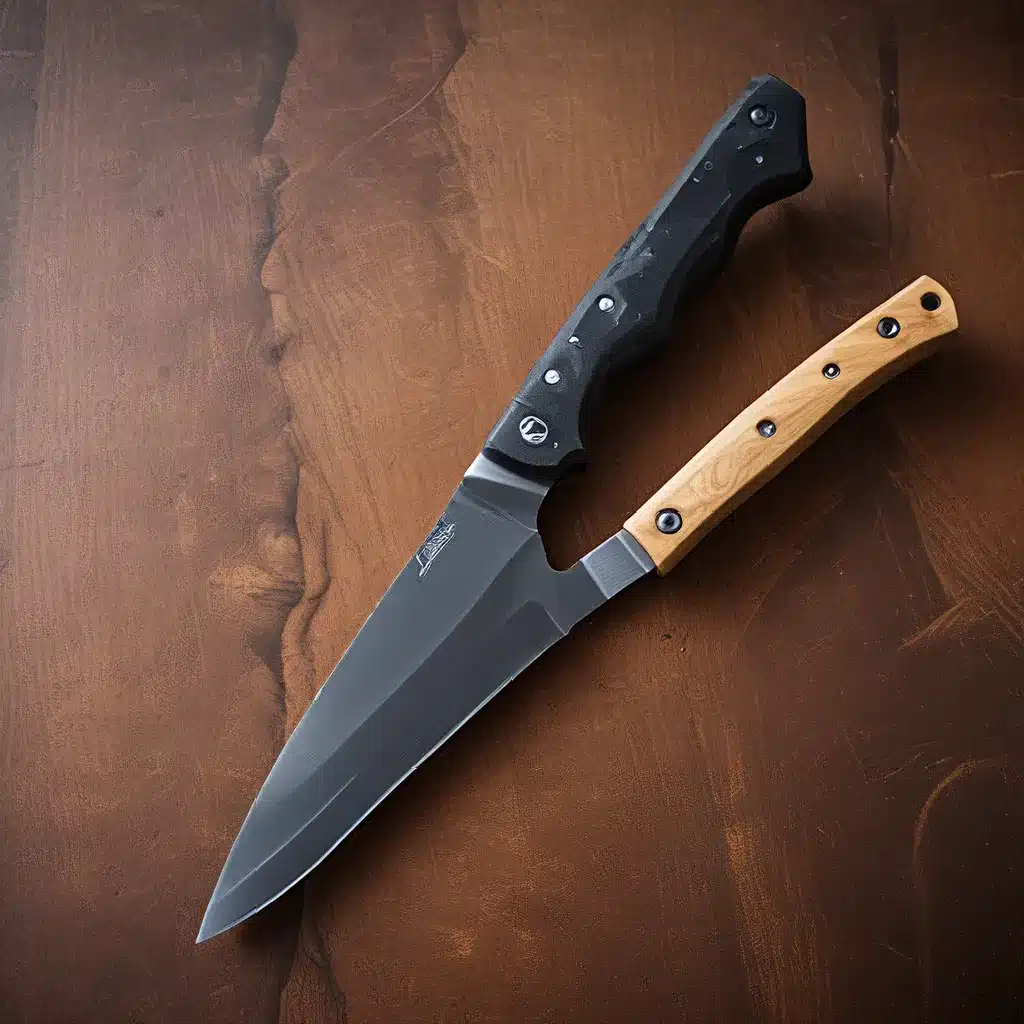
Ah, the humble knife – a tool that has been with us since the dawn of time, evolving alongside humanity’s ever-growing needs and ingenuity. It’s fascinating to delve into the rich history of these versatile blades, uncovering the stories that lie within each intricate design and innovative feature. Join me as we embark on a captivating journey, exploring the origins and transformations of knives throughout the ages.
Ancient Roots: The Dawn of Portable Cutting Tools
The story of the knife begins in the ancient civilizations of the world, where the concept of a portable cutting implement was essential for survival and daily tasks. Archaeologists have uncovered evidence of primitive folding knives dating back to as early as 600-500 BCE, found in regions like Greece and Rome. These early blades, crafted from materials like iron and bronze, may have seemed rudimentary, but they were the precursors to the sophisticated knives we know today.
The Romans, renowned for their engineering prowess, played a significant role in the evolution of folding knife design. Their knives featured a pivoting mechanism at the base of the blade, allowing for a more efficient folding and unfolding action. These Roman knives were often adorned with intricate decorations, indicating their use not only as practical tools but also as status symbols in ancient society.
The Middle Ages and Renaissance: Refinement and Artistic Expression
As we move through history, the folding knife continued to evolve and gain popularity across Europe during the Middle Ages. Advancements in metallurgy led to stronger and more durable blades, while the introduction of the penny knife made these versatile tools accessible to the masses. From eating to crafting, the folding knife became an essential companion for people across various social strata.
The Renaissance era marked a pivotal turning point in the design and use of folding knives. This period witnessed an explosion of artistic creativity and technical innovation. Craftsmen experimented with elaborate designs, incorporating precious metals and intricate engravings. Folding knives became more than just utilitarian tools; they were transformed into works of art, reflecting the flourishing culture and serving as symbols of sophistication and elegance.
The influence of the Renaissance also spread beyond Europe, as the popularity of folding knives reached new heights. In the East, particularly in Japan, folding knives evolved into intricate and highly efficient designs, showcasing the local craftsmanship and philosophy. Meanwhile, in the Americas, indigenous peoples developed their own versions of folding knives, utilizing the resources available to them.
The Industrial Revolution and the Rise of Mass Production
The Industrial Revolution brought about a significant transformation in the world of folding knives. With the introduction of new manufacturing processes and machinery, mass production became a reality, allowing these versatile blades to reach a broader audience. This era saw a shift from hand-crafted artisanal knives to factory-produced models, making them more accessible and affordable.
The advancements in materials and mechanisms during this time were equally remarkable. The introduction of stainless steel revolutionized blade manufacturing, offering greater durability and resistance to corrosion. Handle materials also diversified, with the incorporation of plastics and synthetic materials providing affordability and design versatility.
This period also witnessed the popularization and diversification of folding knives, catering to a wide range of needs and preferences. From the iconic Swiss Army knives known for their multi-tool functionality to the elegant gentleman’s pocketknife, each design represented a unique approach to the art of knife-making.
The Modern Era: Technological Advancements and Cultural Significance
In the contemporary era, folding knives have experienced a remarkable renaissance, blending traditional techniques with high-tech materials. Titanium, carbon fiber, and advanced polymers are now common in high-end knife designs, offering unprecedented strength, lightness, and durability.
Alongside these technological advancements, the cultural significance of folding knives has continued to evolve. They have become cherished collectible objects, symbols of self-reliance, and artistic expressions in their own right. Folding knives are now deeply embedded in various communities, from outdoor enthusiasts and survival experts to everyday carry (EDC) enthusiasts.
As we look to the future, the trends shaping the next generation of folding knives are equally exciting. From minimalist EDC knives to the integration of smart technology, the possibilities are endless. Sustainability and ethical sourcing of materials are also gaining importance, reflecting the changing values of modern society.
Interestingly, the military and tactical applications of folding knives have also played a significant role in their evolution. Robust construction, enhanced grip, and specialized blade designs have made these knives indispensable tools for soldiers, aiding them in a variety of tasks, from cutting through obstacles to close-quarters combat.
Blades of Legacy: The Enduring Significance of Folding Knives
As we delve deeper into the rich history of folding knives, we can’t help but be captivated by their enduring significance. These versatile blades have been integral to survival, trade, culture, and even fashion, reflecting the very essence of human ingenuity and adaptability.
From the ancient stone tools to the modern-day masterpieces, the evolution of folding knives is a testament to the ever-changing needs and preferences of humanity. Each design, each innovation, and each brand with its own unique legacy, collectively weave a tapestry of craftsmanship, functionality, and cultural heritage.
And as I stand here, admiring the exquisite collection of knives at Herman Knives, I can’t help but feel a sense of wonder and appreciation for the enduring legacy of these remarkable tools. Whether you’re a seasoned collector, an outdoor enthusiast, or simply someone who appreciates the art of knife-making, the story of folding knives is one that will continue to captivate and inspire generations to come.


